Kythira sits quietly between the Peloponnese and Crete, tucked away from its Ionian island family and even further from the bustling crowds of Santorini or Mykonos.
This 280-square-kilometer island gives travelers a rare shot at authentic Greece: abandoned Byzantine settlements, pristine beaches you have to hike for, and local traditions that feel untouched by mass tourism.
On my recent trip, I finally understood why locals whisper that it’s Greece’s best-kept secret.
My days on Kythira peeled back layers of history that most people miss. I wandered through ghost towns where Byzantine emperors once called the shots.
I scrambled down rocky paths to beaches like Sparagario—places you really have to work to find. Over home-cooked meals, I listened to locals share stories of a time when no one outside Greece even knew this island existed.
Sure, Aphrodite’s birthplace adds a bit of mythic sparkle. But honestly, what grabbed me most were the untouched villages and hidden coves that only reveal themselves if you’re willing to go off-script.

I’m excited to share the spots, hiking trails, and local tips that turned my visit from a typical island escape into something way more authentic.
From the mysterious caves beneath Mylopotamos to the orange groves of Karavas, Kythira rewards anyone who’s up for a little adventure.
Exploring Kythira’s Mystique: History, Myth, and Identity
Kythira really stands out among Greek islands. Its connection to Aphrodite and centuries of cultural mash-ups give it a unique vibe.
The island’s spot on the map made it a crossroads for everyone—from ancient Greeks to Venetians and even the British.
Aphrodite’s Birthplace and Greek Mythology
I learned that Kythira holds a special place in Greek mythology as Aphrodite’s birthplace. According to Hesiod’s Theogony, she rose from the sea foam right near these shores.
That legend ties Kythira to love and beauty, but not just the romantic kind.
Back in the day, people called it the home of Celestial Aphrodite—the goddess of spiritual love. Ancient Greeks made pilgrimages here to worship at her sanctuary.
People have lived here since before 3000 BC. The Minoans used Kythira as a pit stop on their way west.
Homer even drops the island’s name in his epics, linking it to big names like Paris and Helen.
During classical times, the island produced some impressive artists. The poet Xenodamus and the musician Philoxenos both called Kythira home.
Kythira’s mythological weight made it a cultural hot spot across the ancient Mediterranean.
Byzantine and Venetian Heritage
As I roamed Kythira’s landscape, I stumbled on traces of Byzantine and Venetian influence. The Byzantines took over in the 6th century AD.
You can still spot early Christian mosaics in some of the island’s churches.
Paleochora once served as the Byzantine capital until 1537.
That year, pirates led by Hayreddin Barbarossa stormed the town. Survivors fled, leaving behind a haunting ghost town that still gives me chills.
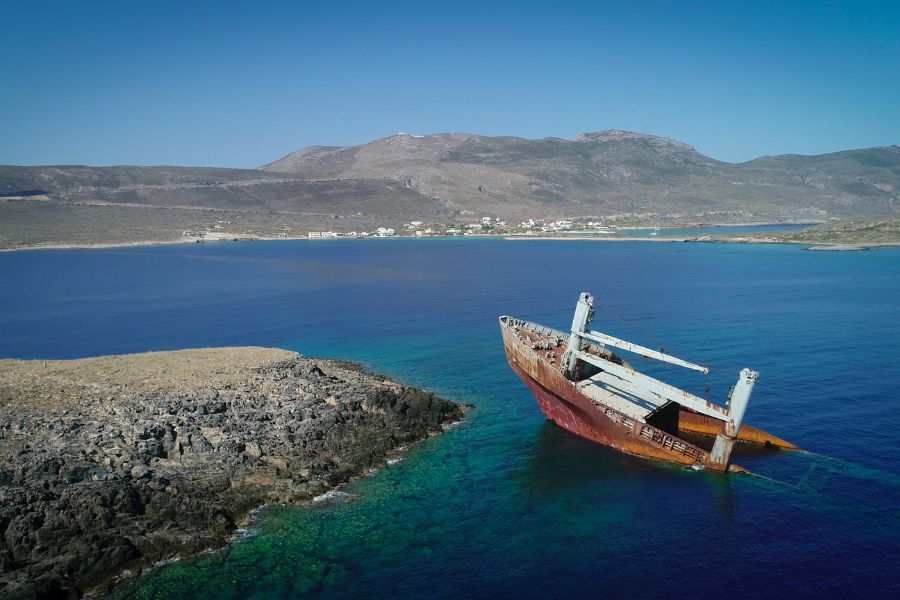
The Venetians stuck around for over 500 years, from 1207 to 1797. That’s a longer run than they had on most Greek islands.
They left their mark with:
- Stone buildings that still show Venetian flair
- Terraced hillsides for farming
- Some Italian flavor in the local dialect
- Old-school feudal land divisions
Venetian rule wasn’t exactly easy for the locals. Peasants had to work tiny plots, separated by endless stone walls.
These minuscule fields got the nickname “Tsirigotiko mertiko”—basically, “the tiniest share.”
Kythira’s Place Among the Ionian Islands
Technically, Kythira belongs to the Ionian Islands group, but it sits way south of the rest.
That isolation shaped its own culture. I could feel it everywhere.
The British took over in 1809, along with the other Ionian Islands. They built roads, harbors, and public buildings—some still in use today.
When the Ionian Islands joined Greece in 1864, Kythira came along for the ride.
But its spot near the Peloponnese means it feels more connected to the mainland than far-off islands like Corfu.
Kythira’s location made it valuable for centuries. Athens and Sparta fought over it in ancient times.
Later, pirates used it as a base between Crete and the mainland.
Byzantine Ghost Towns and Timeless Villages
Kythira’s hills and valleys hide the remains of Byzantine settlements—abandoned stone houses quietly telling stories of the past.
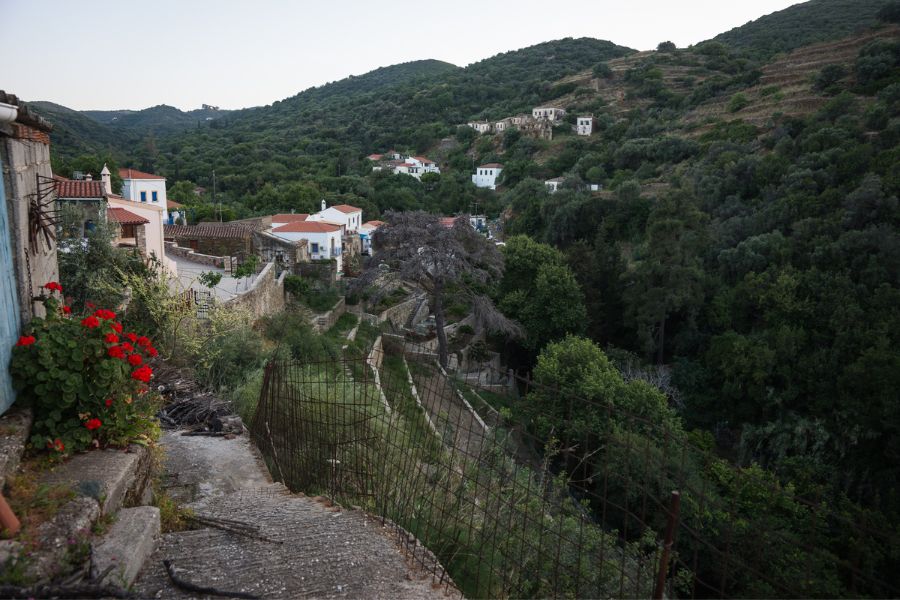
Main towns like Potamos and Avlemonas mix old-world architecture with lively island life.
Discovering Abandoned Settlements
As I explored Kythira’s interior, I found more than a few deserted Byzantine settlements.
Ghost towns cling to hillsides, their stone walls slowly crumbling under the weight of time and weather.
Near the village of Paleochora, I stumbled across the most striking ruins.
Stone foundations show where families once built their lives. Some thick walls still stand, a testament to Byzantine craftsmanship.
Some things I noticed:
- Heavy stonework, clearly built for defense
- Tiny doors and narrow windows—safety first
- Old cisterns for collecting rainwater
- Terraced fields, now overgrown, surrounding the ruins
Repeated pirate raids eventually pushed people out, and over the centuries, these places emptied out.
I wandered quiet, overgrown paths between the ruins. Wild herbs and bursts of bougainvillea have claimed many of the old homes.
Oddly enough, the atmosphere felt more peaceful than spooky.
Potamos: Weekly Market and Local Life
Potamos acts as the island’s commercial heart, sitting right on top of an old Byzantine settlement.
I visited on a Sunday, just as the weekly market filled the main square.
The center blends classic Cycladic white houses with a few newer buildings. Narrow streets twist up from the main road, all lined with whitewashed facades.
Market finds:
- Fresh veggies straight from local farms
- Homemade cheese and olives
- Traditional pastries and honey
- Local wine and olive oil
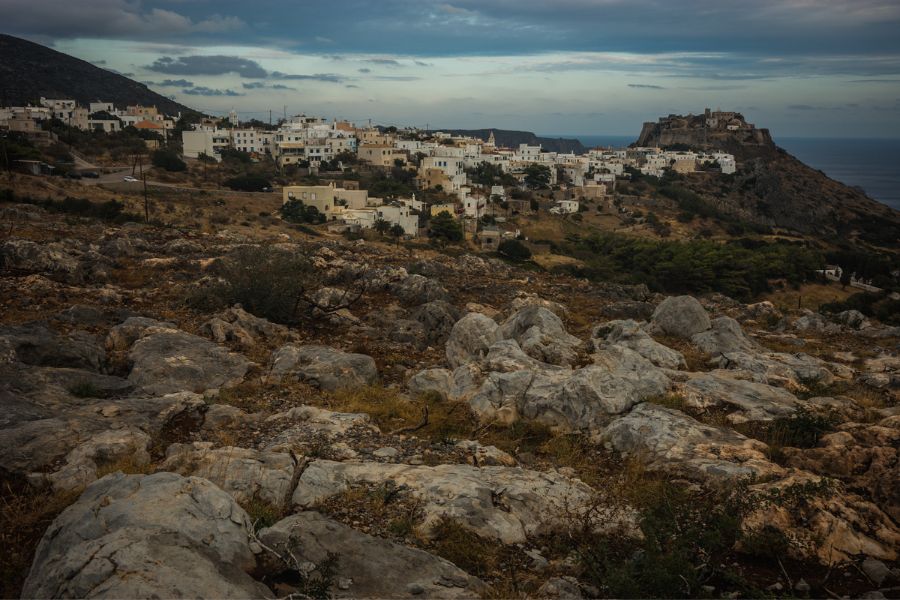
Behind the main street, I wandered the old quarter. Blue shutters and stone houses paint that perfect Greek island picture.
Some buildings have stood for centuries, though most have seen a facelift or two.
Potamos buzzes all year, unlike lots of seasonal Greek towns. Locals shop at small groceries and gather at the kafeneion for coffee and the latest gossip.
Avlemonas: Harbor Town with Venetian Flair
Avlemonas hugs Kythira’s eastern coast, where a natural harbor once gave ships safe haven.
I spent an afternoon strolling the waterfront and poking around the old fortress ruins.
The harbor shows off clear Venetian touches—arched stone buildings face the sea, and a small fortress guards the entrance.
Only parts of the walls remain, but you can still imagine the old battles.
What stood out to me:
- Calm, protected harbor with sparkling water
- Venetian fortress ruins on the headland
- Waterfront tavernas serving up local fare
- A pebble beach that’s perfect for a swim
I climbed up to the fortress for a view stretching all the way to Crete.
Bougainvillea spills in pink and purple over the old harbor buildings. The mix of flowers, stone, and blue sea makes this one of the island’s most photogenic spots.
Secluded Beaches and Hidden Coves
Kythira’s coastline hides some of the Ionian’s most untouched and secluded beaches.
You’ll find everything from wild coves that demand a good hike to port villages with sandy stretches and a few comforts.
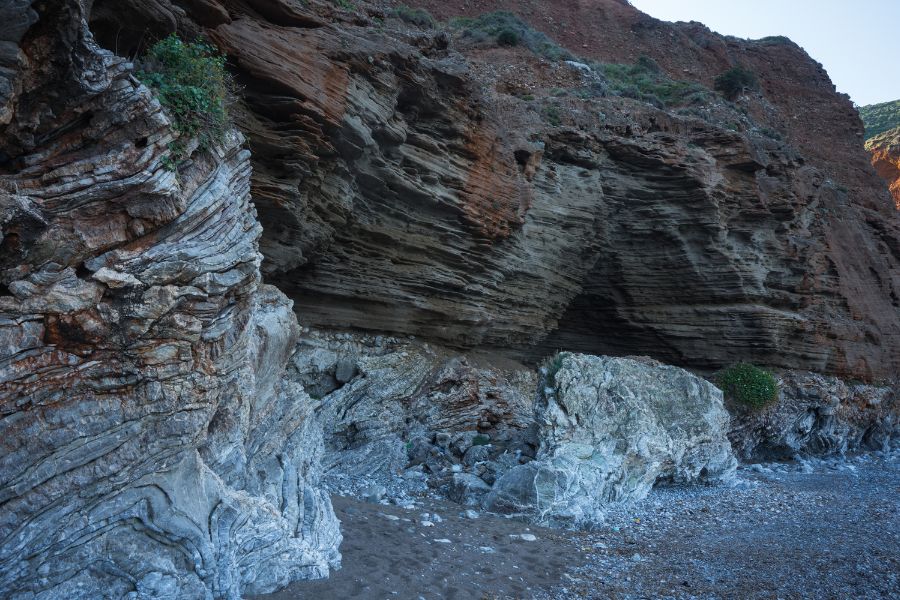
Kaladi, Sparagario, and Other Remote Shores
Kaladi really blew me away as a hidden gem.
Three separate coves, each more beautiful than the last, wait at the bottom of a steep stone stairway.
Getting there isn’t easy—you’ll want sturdy shoes and a bit of hiking grit.
But when you reach those crystal-clear waters, you might just get the whole place to yourself.
Kalami is another secluded favorite, tucked away in the center-west of the island. Its turquoise waters and reed-lined shore feel almost like a private lagoon.
A few more remote beaches worth checking out:
- Feloti – Just 3.5 km from Chora, but rarely crowded
- Chalkos – Pebbles and sand, surrounded by wild beauty
- Lykodimou – The spot for true solitude
Kapsali: The Beachside Village
Kapsali is probably the island’s most accessible beach—but it’s still full of authentic charm.
Only 2 km from Chora, this bay combines golden sand with clear, calm water.
What really sets Kapsali apart is its village vibe.
Tavernas line the water, fishing boats drift in the harbor, and bougainvillea pours over whitewashed buildings.
From here, you can hop on a boat to Chytra Islet.
The bay offers both organized sunbeds and wilder corners for those who prefer quiet.
Families love Kapsali for its gentle waves and handy amenities. It hits that sweet spot between comfort and natural beauty.
Diakofti: Tranquil Port and Sandy Bays
Diakofti doubles as Kythira’s main ferry port and a great beach spot.
A long sandy stretch runs along the northeast coast, perfect for swimming or just soaking up the sun.
Even with the ferry terminal nearby, Diakofti stays surprisingly chill.
The beach sits away from the port action, so you can relax without any hustle.
I found the water especially calm and clear here. The sandy bottom is great for families and kids.
A few simple tavernas serve up fresh seafood and local dishes.
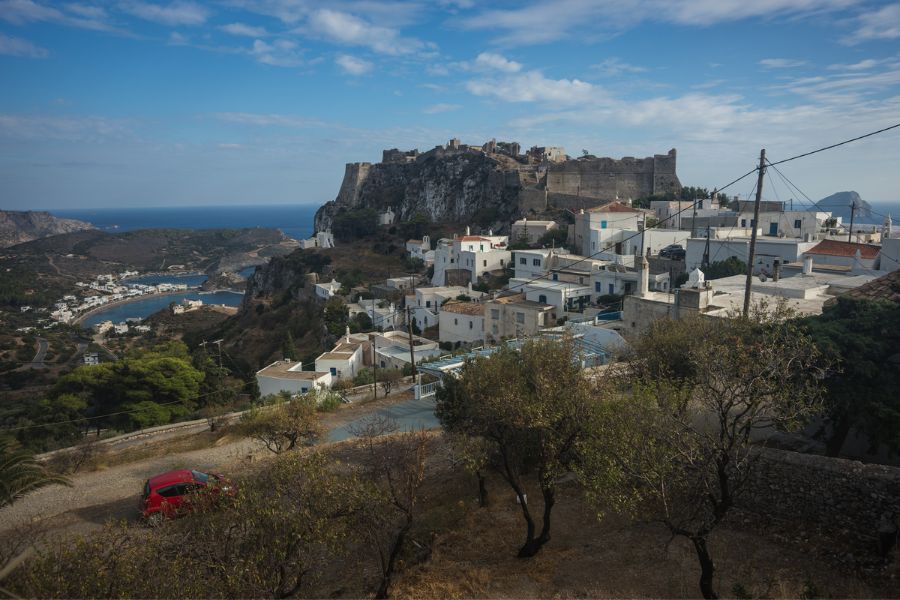
Arriving by ferry? You can hit the beach almost as soon as you step off the boat.
Swimming, Snorkeling, and Seaside Activities
Kythira’s secret beaches are a dream for water lovers.
The clear waters at Kaladi and Chalkos make for top-notch snorkeling.
My favorite snorkeling spots:
- Rocky corners near Avlemonas
- Underwater caves at Kaladi
- Shallow reefs around Kapsali
Swimming conditions change depending on where you go.
Bays like Kapsali and Diakofti stay calm, even when the wind picks up elsewhere.
More exposed beaches like Kalami can get a bit rough.
Bring your own snorkel gear if you can—rentals are hard to find.
Underwater, you’ll spot colorful fish and cool rock formations. It’s easily as good as anywhere else in the Ionian.
Go early in the morning for the best experience. You might just have a whole cove to yourself.
Authentic Experiences Off the Beaten Path
Kythira invites you to connect with its wild beauty and living traditions.
Because it’s so remote, the island has kept its ancient hiking trails, eco-friendly places to stay, and old-school festivals that most tourists never discover.
Hiking Ancient Trails and Waterfalls
When I set out to explore Kythira’s hiking trails, I stumbled upon a whole web of ancient paths. Locals have used these for centuries, and honestly, you can feel the history underfoot.
The Valley of the Watermills? That one really stuck with me. This old route winds along stone channels that once powered the island’s grain mills.
I counted 23 abandoned watermills scattered along its 3-kilometer stretch. The trail eventually leads you to Fonissa Waterfall, which, to my surprise, runs all year thanks to underground springs.

Don’t expect a paved stroll. You’ll want waterproof boots—mud’s pretty much guaranteed in spots.
If you’re planning, October through May is prime time since the waterfall’s at its fullest.
One path I loved starts in Mylopotamos and ends at Kalami Beach. It’s about a two-hour walk, winding through olive groves with cliffside views of sea caves.
The toughest hike I tried was up to Agios Dimitrios Cave. I actually had to ask some local shepherds to point out the start; there’s no sign.
Inside, you’ll find stalactites and an underground lake that feels straight out of a myth.
Eco-Tourism and Sustainable Stays
I didn’t expect Kythira to have such a strong eco-tourism scene, but wow, they take sustainability seriously here.
I stayed at three places that really walk the walk when it comes to the environment.
Thelema Retreat runs completely on solar power. The owners grow their own vegetables and even collect rainwater for daily use.
They’ve got composting toilets, too—not exactly glamorous, but it works.
Pelagia Aphrodite Hotel in Diakofti partners with local fishermen for the freshest daily catches. They’ve ditched single-use plastics and switched entirely to LED lighting.
At Kaleris Organic Farm, I jumped in on olive harvesting. The family taught me pressing methods that haven’t changed in 200 years.
They export their olive oil to specialty shops in Athens, which is pretty cool.
Wildlife watching is a big thing here. I joined Maria Kostas for a morning bird walk and we spotted Mediterranean shags and Eleonora’s falcons nesting on the cliffs.
If you’re around in summer, local beekeepers open their doors during honey harvest. I learned firsthand how thyme honey here gets its unique taste from wild herbs blanketing the island.
Festivals and Local Traditions
Kythira’s festivals happen year-round, but they feel refreshingly uncommercial. I managed to catch three, and each one gave me a real taste of Greek island life.
The Feast of Panagia Myrtidiotissa takes place on September 24th near Kalamos. Families gather to cook arni me patates (lamb with potatoes) in outdoor ovens, and the folk dancing goes until the early hours.
In August, I found myself swept up in the Festival of Agios Dimitrios in Potamos. The music—played on lyra and laouto—and the kids’ dances brought the whole village together.
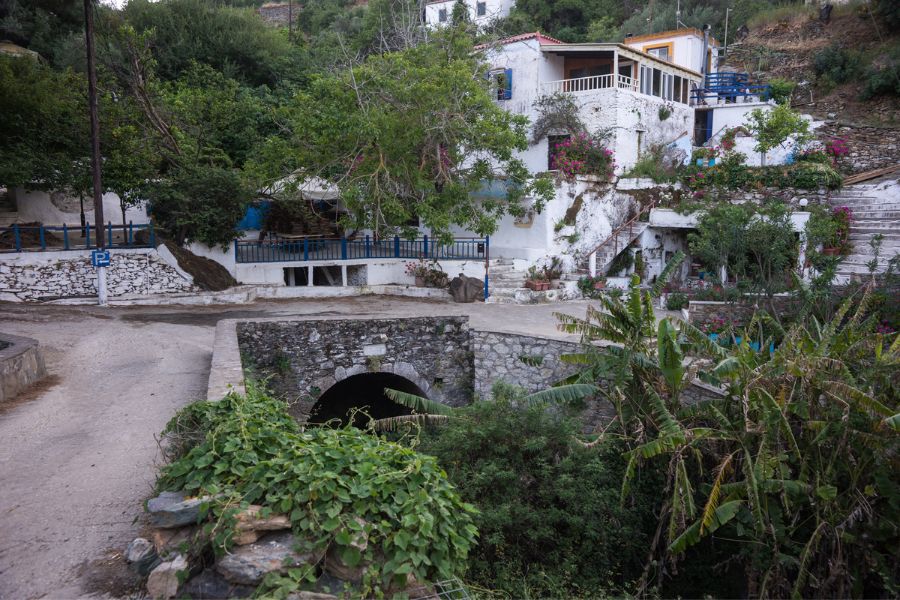
Easter here is something else. On Saturday night, locals parade through the streets with candles, and after midnight, everyone digs into magiritsa soup and red eggs.
Village panigiri (saint’s day festivals) pop up every month. People gather at local churches, share homemade food, and I got to try ladenia flatbread and goat cheese made from old family recipes.
Gastronomic Delights of Kythira
Kythira’s food scene surprised me with its blend of Greek, Venetian, and Ottoman touches. The island’s signature dishes bring together fava, fresh seafood, and a few flavors you won’t find elsewhere.
Fava and Signature Local Dishes
Kythira fava is the star ingredient here. This yellow split pea grows in volcanic soil and gives dishes a creamy, rich flavor.
Cooks whip it up into thick soups or serve it as a simple side with olive oil and herbs.
Some must-try traditional dishes:
- Bakalao: fried salt cod with a crispy shell
- Revithada: chickpea soup with tomatoes and spices
- Rabbit Stifado: slow-cooked rabbit stew loaded with onions
- Pasteli: honey and sesame seed sweets

You’ll notice Venetian cooking methods mixing in with Greek staples, which creates some pretty unique flavors.
Seafront Taverns and Culinary Hotspots
Here are a few spots I’d recommend:
| Restaurant | Specialty | Location |
|---|---|---|
| Arsenis Taverna | Fresh seafood | Seaside |
| Takis Fish Tavern | Grilled fish | Harbor area |
| Taverna To Kalesma | Traditional dishes | Village center |
You can’t beat the freshness at these taverns—the fish goes from boat to plate in hours.
I found my favorite meals at family-run places. They use old recipes and ingredients straight from their gardens.
The Gastronomic Community of Kythira brings together farmers, chefs, and restaurant owners to keep these food traditions alive and thriving.
Essential Travel Tips and Getting There
Planning a trip to Kythira isn’t complicated, but knowing your transport options makes a big difference. The island sits between the Peloponnese and Crete, so you can easily tack on a few extra adventures.
Arriving via Kythira Airport and Ferry Connections
Kythira Airport is the fastest way in. Athens flights take just about an hour, but seats sell out quickly, especially in summer.
I’d book as early as possible. The airport only handles a handful of flights each day.
Ferries give you more options. The main routes are:
- Piraeus to Kythira: 7-8 hours overnight
- Gythio (Peloponnese) to Kythira: 2.5 hours
- Kissamos (Crete) to Kythira: 3 hours
Ferry tickets go fast during the summer, so don’t wait to book. The Piraeus line runs all year, but the others are seasonal.
You’ll need a car to get around. Most rental agencies are right near the airport and port.
Best Time to Visit and Practical Logistics
May to September is the sweet spot for weather and open businesses. I like late May or early October—fewer people, same gorgeous scenery.
Summers get hot, up to 85°F (29°C), but winters stay mild, though lots of places shut down.
Pack these essentials:
- Good walking shoes for rocky beaches
- High SPF sunscreen
- A hat for the sun
- Light layers for cooler evenings
Locals enforce quiet hours from 3:00-5:30 PM and 11:00 PM-7:00 AM. It’s strict, so keep it in mind.
Roads are narrow and twisty. Drive slow—sometimes plants block your view around corners.
In summer, reserve restaurants ahead of time. The best spots fill up fast.
Exploring Beyond: Peloponnese, Crete, and Neighboring Islands
Kythira’s location makes it a perfect base for island-hopping. I used the Gythio ferry to reach the Peloponnese, and from there, Mani Peninsula and Sparta are just a couple hours by car.
You can hop to Crete via Kissamos port, which puts you near Chania and the Samaria Gorge.
If you want real solitude, the ferry to Antikythera runs twice a week in summer. Only about 50 people live there.
Some multi-island packages include stops on Ionian Islands like Zakynthos or Kefalonia, but you’ll need to head back to the mainland first.
Give yourself at least three days on Kythira. There’s a lot to see—hidden beaches, Byzantine ruins, and trails that deserve more than a quick look.
Frequently Asked Questions
Kythira’s got Byzantine treasures, ancient castles, and secret coves that you really need local tips to find. Its spot between three seas means microclimates everywhere and some rare wildlife you won’t see elsewhere.
What are the top must-see historical sites on Kythira Island?
Start with the Byzantine Collection in Livadi. It’s tucked inside a post-Byzantine chapel near the Church of Analipsi.
You’ll see icons, mosaics, religious artifacts, and frescoes spanning centuries. It’s open Tuesday through Sunday, 8:00 AM to 4:00 PM, and costs €2 to enter.
Kythira’s castles are a must, too. They sit at the crossroads of the Ionian, Aegean, and Cretan seas.
People have lived here since prehistoric times. Myth says Aphrodite herself was born on Kythira.
How can one access the secluded beaches of Kythira for a private experience?
Getting around Kythira isn’t easy without your own wheels. Public transport is pretty much limited to port arrivals in summer.
Renting a car is your best bet for finding hidden coves and secluded beaches. Some of the most beautiful spots require a drive down small, winding roads.
I found early mornings are the quietest at popular beaches. Locals know where the real secret spots are—don’t be shy about asking.
What unique flora and fauna can be found on Kythira Island?
Kythira’s spot between three seas creates all sorts of unique ecosystems. The Mediterranean climate here supports a huge mix of plants adapted to both coast and inland.
Because it’s a bit isolated, lots of native species have survived. The mix of sea routes has shaped both land and marine life.
Endemic plants pop up all over, especially in rocky and inland areas.
What are some highly recommended off-the-beaten-path activities on Kythira?
Check out the island’s monasteries—they’re tucked away in some stunning spots and give you a window into local spiritual life.
If you’re up for adventure, explore some of the caves. The island’s geology has created several you can actually get into.
Hiking trails here often lead to jaw-dropping viewpoints where you can see all three surrounding seas.
Venture into the smaller villages. These places keep traditional Greek island life alive and kicking.
How does the climate in Kythira influence travel plans throughout the year?
Kythira’s Mediterranean climate means you can visit any time. Summer’s best for swimming and beach days.
Spring and fall are perfect for hiking and sightseeing—warm, but not scorching.
Winter is quieter and more local. A lot of touristy places close, but you’ll get a more authentic feel for island life.
Weather can shift quickly here, thanks to the island’s position between three major seas. It keeps things interesting!
What are the local culinary specialties of Kythira that visitors should try?
Kythira sits right at the intersection of several Greek culinary traditions, and you can really taste that in its food. The island’s surrounded by three seas, so you’ll find plenty of super-fresh seafood on local menus.
Locals grow a lot of their own herbs and vegetables, taking full advantage of the Mediterranean climate. It’s amazing how many dishes use ingredients that have been grown here for generations.
Honestly, you shouldn’t leave without sampling the local honey. The bees here have access to all sorts of wildflowers, and it gives the honey this unique, floral flavor. Olive oil from Kythira is another must-try—families have been making it here for ages, and you can taste the tradition in every drop.
If you’re looking for the real deal, skip the busy tourist spots and duck into a taverna in one of the smaller villages. These places often serve recipes handed down through the family, and you’ll probably end up chatting with someone who’s happy to share the story behind your meal.

